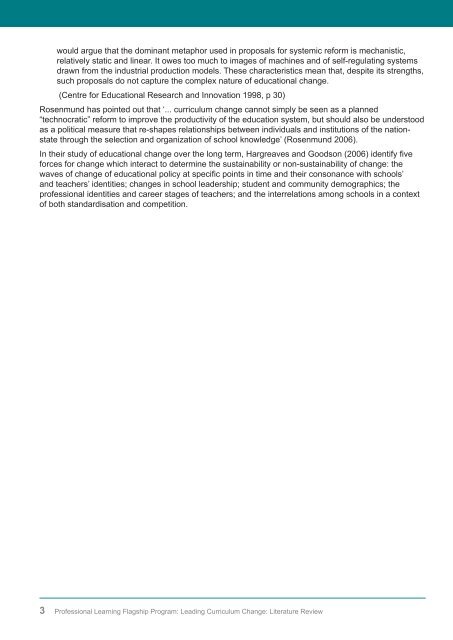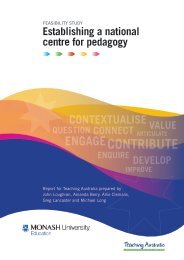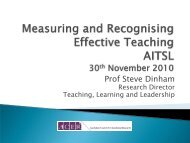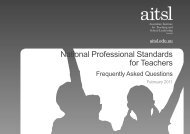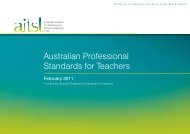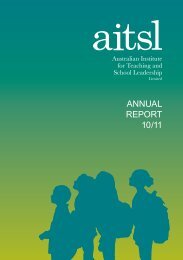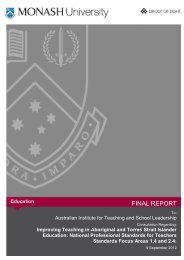Professional Learning Flagship Program: Leading Curriculum Change
Professional Learning Flagship Program: Leading Curriculum Change
Professional Learning Flagship Program: Leading Curriculum Change
You also want an ePaper? Increase the reach of your titles
YUMPU automatically turns print PDFs into web optimized ePapers that Google loves.
would argue that the dominant metaphor used in proposals for systemic reform is mechanistic,relatively static and linear. It owes too much to images of machines and of self-regulating systemsdrawn from the industrial production models. These characteristics mean that, despite its strengths,such proposals do not capture the complex nature of educational change.(Centre for Educational Research and Innovation 1998, p 30)Rosenmund has pointed out that ‘... curriculum change cannot simply be seen as a planned“technocratic” reform to improve the productivity of the education system, but should also be understoodas a political measure that re-shapes relationships between individuals and institutions of the nationstatethrough the selection and organization of school knowledge’ (Rosenmund 2006).In their study of educational change over the long term, Hargreaves and Goodson (2006) identify fiveforces for change which interact to determine the sustainability or non-sustainability of change: thewaves of change of educational policy at specific points in time and their consonance with schools’and teachers’ identities; changes in school leadership; student and community demographics; theprofessional identities and career stages of teachers; and the interrelations among schools in a contextof both standardisation and competition.3 <strong>Professional</strong> <strong>Learning</strong> <strong>Flagship</strong> <strong>Program</strong>: <strong>Leading</strong> <strong>Curriculum</strong> <strong>Change</strong>: Literature Review


